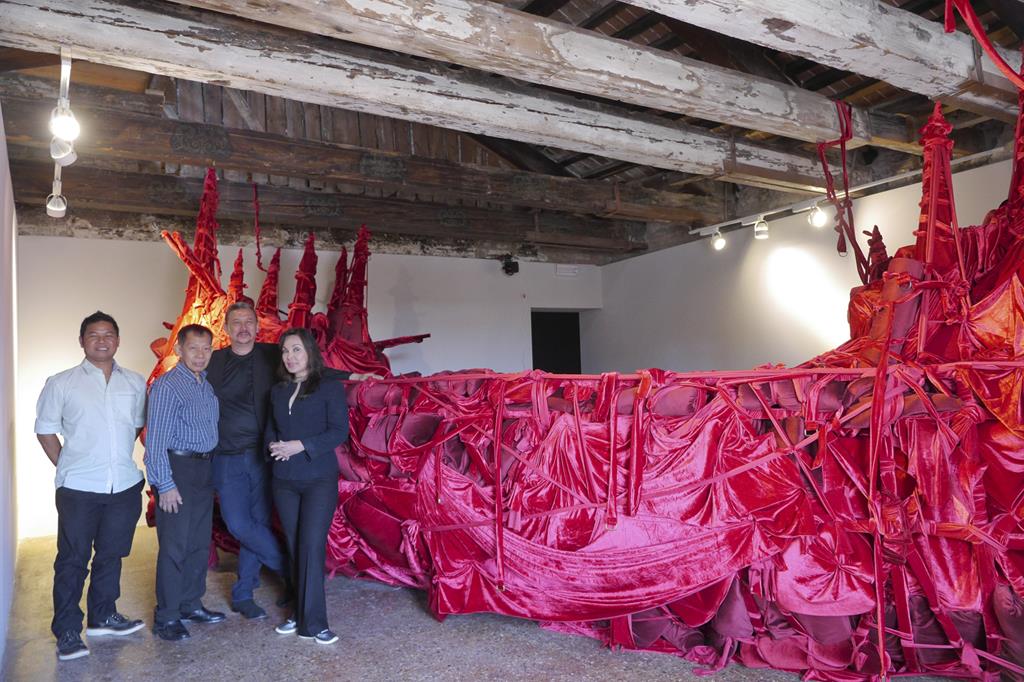Philippine Pavilion Makes an Impact at Venice Biennale 2015
May 14, 2015The Philippines’ comeback to the Venice Biennale proved to be a success as the Philippine Pavilion for the 56th International Art Exhibition makes an impact in the world’s most prestigious contemporary art exhibition.
The Philippine Pavilion—exhibiting Patrick D. Flores’ curatorial proposal, Tie A String Around The World, featuring the works of Manuel Conde and Carlos Francisco (for the film Genghis Khan), Jose Tence Ruiz (for the installation Shoal), and Manny Montelibano (for the multi-channel videoA Dashed State)—has been chosen as a must-see national pavilion by several art institutions and news organizations.
Art auction house Christie’s, in its pick of the pavilions, says that if one does not have time to visit all national pavilions at the 2015 Venice Biennale, the Philippine Pavilion is among its choice of must-see pavilions.
London-based artist and curator Pippa Koszerek made the Ten… must-see national pavilions list for a-n The Artists Information Company, a non-profit organization that seeks to stimulate contemporary visual arts practice and affirm the value of artists in society.
Koszerek included the Philippine Pavilion in the list and takes note of the country’s comeback after a 51-year hiatus. She said “the exhibition spans this gap, bringing together three generations of practitioners. Taking Manuel Conde and Carlos Francisco’s 1950s feature Genghis Khan as a starting point and curatorial reference, the exhibition also introduces work from Jose Tence Ruiz and Manny Montelibano, who both explore socioeconomic issues of sea nations, global politics and the volatility of borders through installation and film, respectively.”
Meanwhile, ArtsHub, Australia’s leading portal for professionals working within the arts, cites the Philippine Pavilion as among The best of the Venice Biennale 2015, saying that “the Philippines has made a great comeback to the Biennale, after fifty years of absence.”
Senator Loren Legarda, the prime mover behind the Philippines’ comeback to the Venice Biennale, said “the attention the Philippine pavilion has been receiving proves the country’s curators’ and artists’ readiness to be part of the global contemporary art scene.”
“We have a robust history of Philippine art and a lively contemporary art scene. Philippine contemporary art is vibrant and attuned to global developments. What it needs is a sustained effort to provide platforms so that it could further widen its perspective and interact more briskly with surrounding impulses,” Legarda added.
Art+Auction magazine and Blouin Artinfo website featured Legarda as one of the Venice Biennale Power Brokers “who remain relatively unsung in their efforts to ensure that the art stands out.”
The Philippines’ return to the Venice Biennale, 51 years after its first participation in 1964, was made possible through the joint effort of the National Commission for Culture and the Arts (NCCA), the Department of Foreign Affairs (DFA) and the Office of Senator Loren Legarda, and with the support of the Department of Tourism (DOT) and the Tourism Promotions Board of the Philippines.


